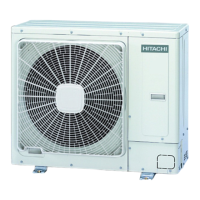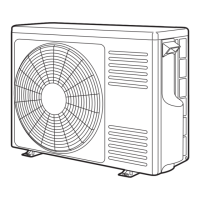3. Piping work and refrigerant charge
53
SMGB0079 rev.0 - 01/2013
3
C A U T I O N
• Cap the end of the pipe when pipe is to be inserted through a wall hole.
• Do not put pipes on the ground directly without a cap or vinyl tape at the end of the pipe.
• Ifpipinginstallationisnotcompleteduntilnextdayoroveralongerperiodoftime,brazeofftheendsofthe
pipingandchargewithoxygenfreenitrogenthroughaSchradervalvetypeaccessttingtopreventmoisture
andparticlecontamination.
• DonotuseinsulationmaterialthatcontainsNH3,asitcandamagecopperpipematerialandbecomeasource
offutureleakage.
• Insulatetheunionsandare-nutsatthepipingconnectionpartcompletely.
• Completelyinsulatebothrefrigerantgasand liquid piping betweentheindoorunitandtheoutdoor unit to
avoidadecreaseofperformance;ifnot,dewwilloccuronthepipingsurface.
• RefrigerantcircuitandWatercircuitmustbeperformedandinspectedbyalicensedtechnicianandmustcom-
plywithallrelevantEuropeanandnationalregulations.
Insulation
Attach the pipe insulation to each branch using vinyl tape. Attach also insulation to eld supplied pipes in order to prevent
the capacity decrease according to the ambient air conditions and dewing on the low pressure pipe surface.
1. Cap.
2. Field supplied insulation.
3. Do not make a gap.
N O T E
When polyethylene foam is applied, it is recommended the
usageofawallthicknessof10mmfortheliquidpipingand
15mmto20mforthegaspiping.
C A U T I O N
• Performtheinsulationworkafterthepipesurfacetemperaturedecreasestotheroomtemperature,ifnotthe
insulationmaterialmaymelt.
• Iftheendsofthepipingsystemareopenafterendingthepipingwork,attachcapsorvinylbagssecurelyto
theendsofthepiping,avoidingmoistureanddustentering.

